Major project
Ergonomic usability assessment and redesign of an image diagnosis device interface… [Read more]
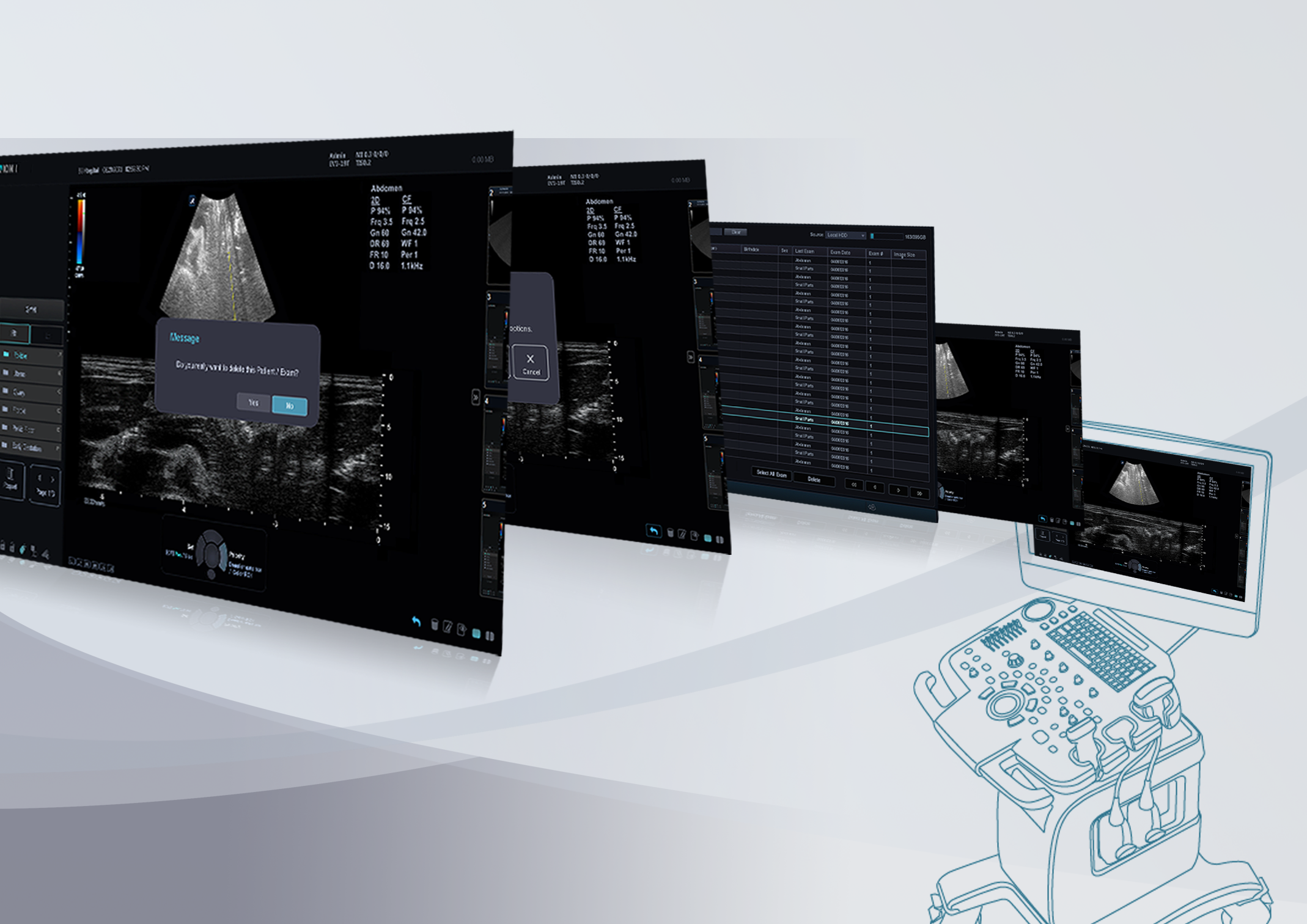
Ergonomic usability assessment and redesign of an image diagnosis device interface for older sonographers
The purpose of this study is to improve the interface design on ultrasound diagnostic devices for use by the increasing number of older sonographers. By applying Jacob Nielsen's heuristic evaluation and inclusive design principle, 15 checklists, sorted into three categories, were produced and analysed.
Those three categories were: task process, design factor, and risk prevention factor.
The common task process of the '1. Patient', '2. Scan', '3. Measure', and '4. End Exam' sections were established through consultations with clinical experts. In accordance with this common task process, participants were tested and individually interviewed.
Qualitative data were analysed and important keywords were derived, sorted by topic, using the NVivo data analysis tool. In accordance with the improvements identified, the existing ultrasonic interface design was redesigned and presented.
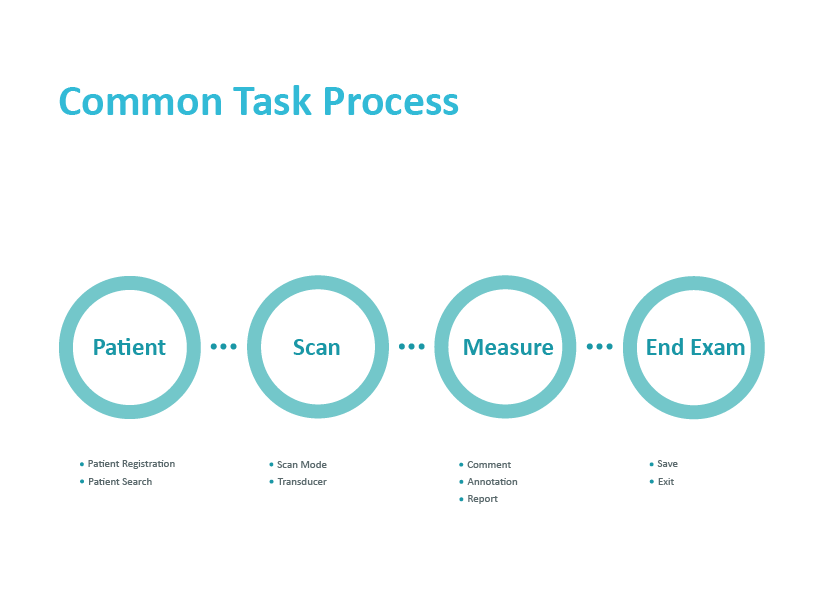
Common Task Process
For my project, I asked elderly sonographers to conduct interface design testing for about a week, using Alpinion’s ultrasonic diagnostic device product.
Through their empirical evaluations, I tried to improve the usability of the interface design by identifying the ergonomic difficulties faced by elderly sonographers and their requirements when examining patients.
It was necessary to establish a common task process for sonographers through consultation with clinical experts in the field of ultrasound diagnostic equipment before participants tested the product. This was a necessary process to derive the important factors for interface design improvement through commonly suggested rules. The common task process is related to the workflow of sonographers using ultrasounds to examine patients.
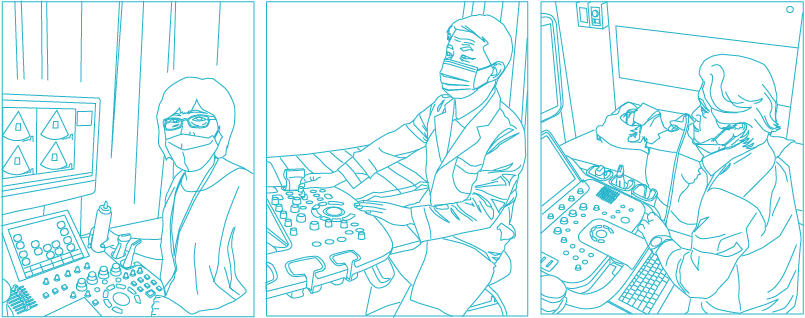
Analysis according to ergonomics and human factors
In interviews with elderly sonographers, the keyword ‘eye fatigue' was the most frequently mentioned as the ergonomic difficulty they faced.
This suggests that they have the greatest difficulties in the visual realm. In addition, there were many references to buttons and icons.
Also, the sonographers mentioned the transducer, the component that actually delivers the ultrasonic waves into the patient, and the cable line that connects the transducer to the main body of the device, and they hoped that a wireless transducer without a cable would become more common.
The decline in physical ability that sonographers experience as they age may also be accompanied by reduced memory and concentration.
Concerns were also expressed about the resulting decrease in inefficiency and the potential for misdiagnosis during patient examination. Some of the findings from this survey will help them to improve their working environment in the future.
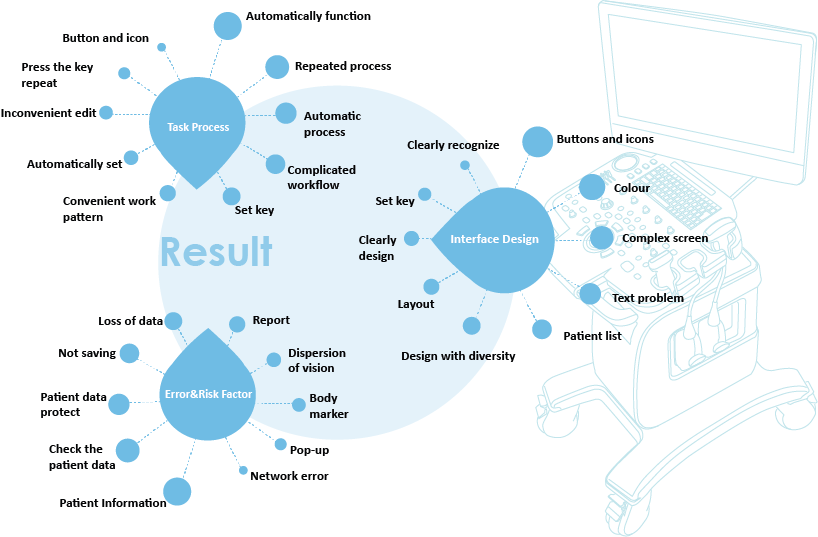
Interview Analysis
Important keywords were analysed for each of the three categories using NVivo, a qualitative research tool, on the individual interview data conducted with the three elderly sonographers.
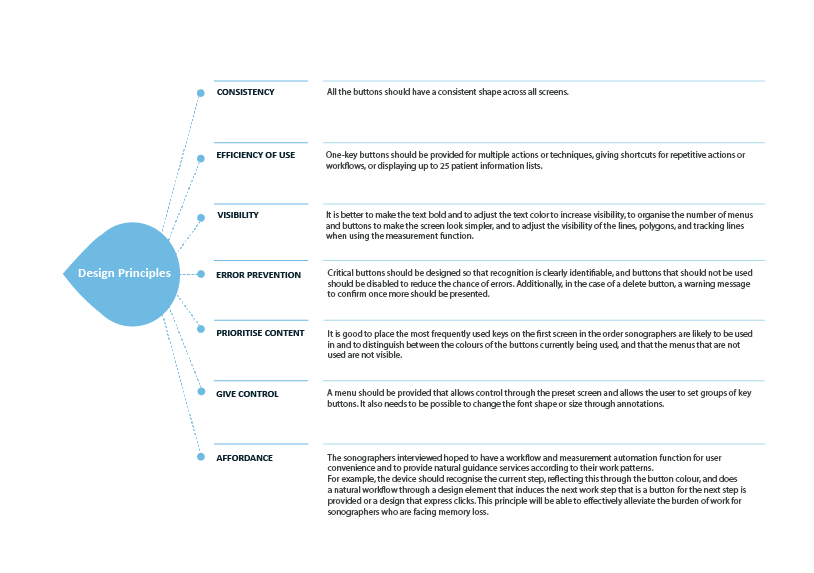
Analysis result according to the design principle
Through an additional survey, the crucial improvements were identified from responses to a list of 15 questions corresponding to 'Task Process', 'Design Elements', and 'Risk Prevention Factor'.
In addition, this response was analyzed once more according to the design principle to which the usability evaluation principle was applied.
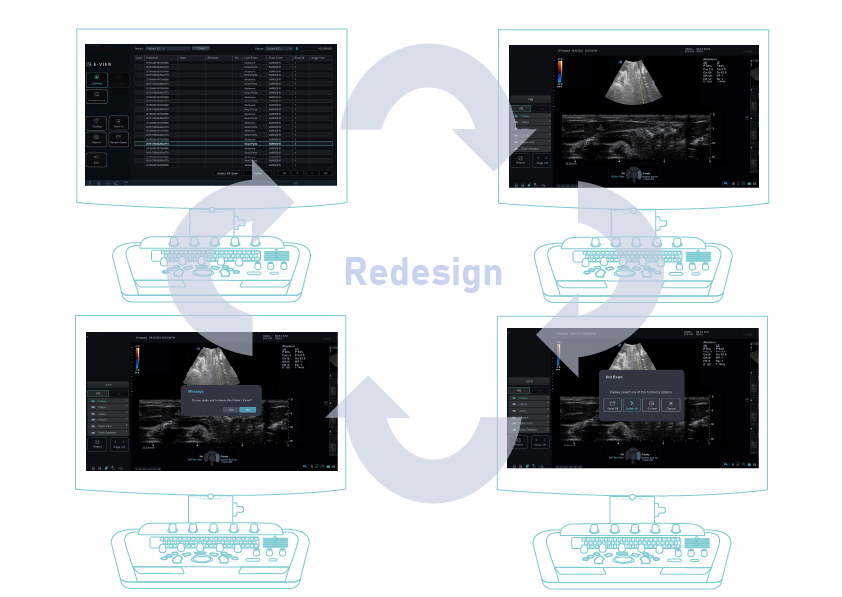
Redesign
• Considering readability for the elderly
In consideration of potential eye fatigue amongst the elderly, buttons and icons with labelling should be intuitively expressed. The most frequently used buttons should be placed on the first page and adjust the menu size and text colour for increased readability.
• Registering and searching for patient information
The patient list menu does not allow scrolling and provides information when searching for information so that it can be sorted. If the patient list exceeds about 25, it is effective to provide previous and next buttons to confirm additional lists.
• Providing a function to prevent errors
It should provide a function to prevent or recognize mistakes or errors by providing a disable button to prevent potential errors, a warning message pop-up window, and a back button.
Noel (Ho Kyoung) Lee
I was very interested in the interfaces between humans and machines, and I was also interested in the medical field, and so for a long time I worked as an interface designer for medical imaging devices. Currently, I am interested in designs that cater to minority groups in society, such as the elderly and the disabled. I have experience in various mobile applications in the medical field and in the interface design of imaging devices including ultrasound diagnostic devices, high-intensity focused ultrasound, and x-ray machines, as well as the interface designs of drug injectors system. Whenever I designed a medical device interface, I made sure to remember that the end user comes first. In addition, since medical devices are machines that are closely related to human health and life, awareness of safety is critically important. The reason I became interested in the needs of minorities, such as the disabled and the elderly was when I became interested in their lives through my experience of participating in a project to develop a healthcare mobile application for the elderly. Through this realisation, I became interested in human beings, but I had no knowledge about the marginalised. This fact also motivated me to study the ergonomics and human factors course at Loughborough University. Studying at Loughborough made me believe that humans are the most beautiful beings in the world, something I continue to believe. It is my hope that any design work that I produce can contribute to improving the lives of these beautiful beings. I thus wish to expand my design philosophy to feature a more comprehensive mindset that includes everyone, catering to all their needs.
I have experience in various design fields. I worked in both the marketing and design teams at IT solution providers Wdcals, Xcurenet, and Monitorapp. I think that marketing and design, though they have different methods and immediate goals, their ultimate endpoint is the same: getting a product in a user’s hands. As a design major, I had a different perspective from the marketers, and that attitude contributed to the company's sales growth and advertising.
After that, I moved over to the design side of the house and was responsible for the interface design of the diagnostic ultrasound systems and treatment systems at Alpinion Medical Systems, a device manufacturer in South Korea.
As the lead researcher in charge of design at Alpinion’s Medical Device Development Lab, I developed extensive experience in hardware and software development on a number of different projects, working with hardware engineers, software engineers, as well as people from marketing and advertising and other business units.
The project allowed me to develop a solid understanding of not only medical device technology but how these technologies are marketed and sold to healthcare institutions.
The design knowledge and skills I have acquired in my graduate programs, my marketing and advertising experience, sales support skills, and design competency are qualities that set me apart from others.
With the knowledge, it is my hope to apply as much of that as I can when I return to medical device design, in order to build systems that benefit everyone.
Major project
Ergonomic usability assessment and redesign of an image diagnosis device interface for older sonographers
Awards
Memberships
▪ Korean Society of Design Science
▪ Korea Illustration
▪ Communication Design Association of Korea